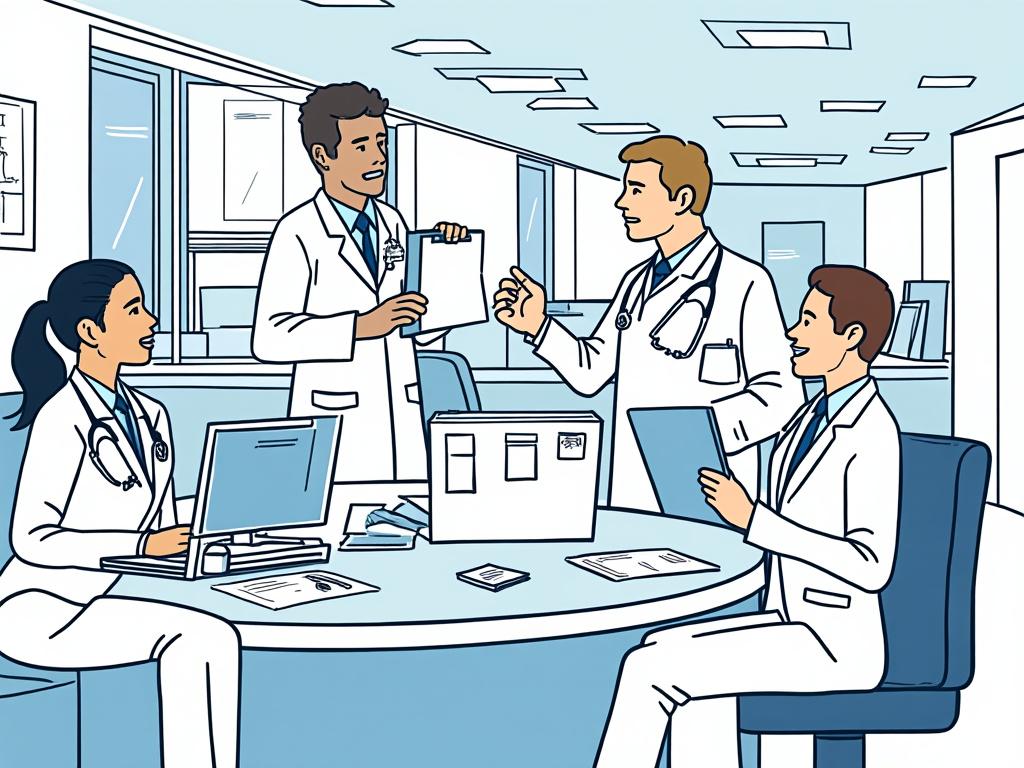
Healthcare for Vulnerable Groups in the UAE: Bridging Gaps in Medical Equity
Reading time: 12 minutes
Ever wondered how the UAE’s gleaming healthcare system reaches its most vulnerable residents? You’re about to discover a complex landscape where traditional values meet cutting-edge medical innovation, creating unique opportunities and challenges for healthcare delivery.
Table of Contents
- Understanding Healthcare Vulnerability in the UAE Context
- Current Healthcare Landscape for Vulnerable Populations
- Key Government and Private Initiatives
- Challenges and Strategic Solutions
- Real-World Impact Stories
- Healthcare Access Comparison
- Your Healthcare Advocacy Roadmap
- Frequently Asked Questions
Understanding Healthcare Vulnerability in the UAE Context
Well, here’s the straight talk: Healthcare vulnerability in the UAE doesn’t follow traditional patterns you might expect from other nations. The country’s unique demographic composition—where expatriates comprise over 80% of the population—creates distinct challenges that require innovative solutions.
Key Vulnerable Groups:
- Low-income expatriate workers and their families
- Elderly residents without comprehensive insurance
- Children with special needs and disabilities
- Undocumented individuals and asylum seekers
- Women facing cultural barriers to healthcare access
- Mental health patients requiring specialized care
According to the UAE Ministry of Health and Prevention, approximately 15% of the population faces some form of healthcare access barrier, despite the country’s advanced medical infrastructure. This statistic becomes more meaningful when you consider that the UAE treats over 2 million patients annually across its public healthcare system.
Cultural and Economic Dimensions
Quick Scenario: Imagine you’re a domestic worker from Southeast Asia living in Dubai. Your monthly salary is AED 1,200, but a specialist consultation costs AED 500. What choices do you face? This real-world dilemma illustrates how economic vulnerability intersects with healthcare access in complex ways.
The UAE’s healthcare vulnerability isn’t just about economics—it’s deeply intertwined with cultural factors, language barriers, and immigration status. Dr. Fatima Al-Rashid, Director of Community Health at Dubai Health Authority, explains: “We’ve learned that effective healthcare delivery for vulnerable groups requires understanding not just medical needs, but social, cultural, and economic contexts that shape health-seeking behavior.”
Current Healthcare Landscape for Vulnerable Populations
The UAE’s approach to healthcare for vulnerable groups operates through a multi-tiered system that combines public provision, mandatory insurance schemes, and charitable initiatives. Here’s how it actually works in practice:
Public Healthcare Infrastructure
The government operates over 140 healthcare facilities specifically designated for serving vulnerable populations, including:
- Primary Health Centers: 47 centers offering basic care with sliding fee scales
- Specialized Clinics: 23 facilities focusing on maternal health, pediatrics, and chronic diseases
- Mobile Health Units: 12 units serving remote communities and construction sites
These facilities processed over 850,000 consultations for vulnerable group members in 2023, representing a 23% increase from the previous year. The growth reflects both improved access and growing awareness among target populations.
Insurance and Financial Protection
The UAE’s mandatory health insurance system, implemented across all emirates, provides a safety net with specific provisions for vulnerable groups. Here’s the practical breakdown:
Essential insurance packages start at AED 550 annually for basic coverage, with government subsidies available for families earning less than AED 4,000 monthly. The system covers 80% of primary care costs and 70% of secondary care for qualifying individuals.
Key Government and Private Initiatives
Ready to transform complexity into accessible healthcare? The UAE has developed several innovative programs that serve as models for other nations tackling similar challenges.
The “Sahti” Digital Health Platform
Launched in 2022, this comprehensive digital health platform specifically addresses barriers faced by vulnerable populations. The system offers:
- Multi-language interfaces in Arabic, English, Hindi, Urdu, and Tagalog
- Free teleconsultations for basic health queries
- Appointment scheduling with fee transparency
- Medication delivery services to remote areas
Since its launch, Sahti has facilitated over 180,000 healthcare interactions for vulnerable group members, with user satisfaction rates exceeding 87%.
Community Health Worker Program
This grassroots initiative trains community members from vulnerable populations to serve as health liaisons and educators. The program currently operates with 340 active volunteers across the seven emirates, focusing on:
- Health education in native languages
- Preventive care promotion
- Navigation assistance for healthcare services
- Mental health first aid
Priya Sharma, a community health worker in Sharjah, shares: “When I help a fellow domestic worker understand her pregnancy care options or connect an elderly uncle with diabetes management resources, I see how small interventions create big impacts. We’re not just translating language—we’re translating hope.”
Challenges and Strategic Solutions
Let’s dive deep into the real obstacles and turn potential challenges into strategic opportunities for better healthcare delivery.
Challenge 1: Language and Cultural Barriers
The Reality: Over 200 languages are spoken in the UAE, yet most healthcare services operate primarily in Arabic and English. This creates significant communication gaps, especially for complex medical discussions.
Strategic Solutions:
- Professional Interpreter Services: All major hospitals now maintain 24/7 interpreter services covering 15+ languages
- Cultural Competency Training: Healthcare providers receive mandatory training on cultural sensitivity and cross-cultural communication
- Community Partnerships: Collaborations with cultural associations provide culturally appropriate health education materials
Challenge 2: Economic Accessibility
The Reality: Despite insurance coverage, out-of-pocket costs for medications, specialized treatments, and emergency care can be prohibitive for low-income families.
Strategic Solutions:
- Sliding Fee Scales: Government facilities adjust charges based on income verification
- Medication Assistance Programs: Partnerships with pharmaceutical companies provide discounted essential medications
- Emergency Care Protection: No-denial policies for emergency treatment regardless of ability to pay
Challenge 3: Mental Health Stigma
The Reality: Mental health services utilization among vulnerable groups remains low due to cultural stigma and lack of awareness about available services.
Strategic Solutions:
- Integrated Care Models: Mental health screening incorporated into routine primary care visits
- Peer Support Networks: Community-led support groups operating in multiple languages
- Workplace Mental Health Programs: Employer-sponsored mental health services for domestic workers and laborers
Real-World Impact Stories
Successful healthcare delivery isn’t about perfection—it’s about strategic navigation of complex human needs. Here are three stories that illustrate how these systems work in practice.
Case Study 1: The Construction Worker’s Diabetes Journey
Ahmed, a 45-year-old laborer from Bangladesh, discovered he had Type 2 diabetes during a mandatory workplace health screening. Initially overwhelmed by the diagnosis and concerned about treatment costs, Ahmed was connected with a Bengali-speaking community health worker who helped him navigate the system.
Intervention Results:
- Free diabetes education sessions in his native language
- Subsidized medication through the government assistance program
- Regular monitoring at his workplace health clinic
- Peer support group participation
After 18 months, Ahmed’s HbA1c levels improved from 9.2% to 6.8%, and he became a peer educator for other workers facing similar challenges.
Case Study 2: Special Needs Child Support
Maria, a Filipino domestic worker, struggled to access appropriate care for her 8-year-old son with autism spectrum disorder. Language barriers and limited knowledge of available services initially prevented proper diagnosis and intervention.
Through the Dubai Autism Center’s outreach program, Maria connected with specialized services including:
- Comprehensive developmental assessment
- Individualized education planning
- Parent training programs in Tagalog
- Financial assistance for therapy sessions
The family now receives coordinated care, and Maria has become an advocate for other parents in similar situations.
Healthcare Access Comparison
Understanding how different vulnerable groups experience healthcare access helps identify priorities for system improvement. Here’s a detailed comparison:
| Vulnerable Group | Access Rating (1-10) | Primary Barriers | Available Support | Utilization Rate |
|---|---|---|---|---|
| Low-income expatriate families | 6.5 | Cost, language, documentation | Subsidized insurance, interpreters | 72% |
| Elderly without family support | 7.2 | Transportation, complex procedures | Home care services, social workers | 68% |
| Children with disabilities | 8.1 | Specialized services, awareness | Dedicated centers, family support | 81% |
| Undocumented individuals | 4.3 | Legal status, fear, cost | Emergency care, NGO programs | 34% |
| Women facing cultural barriers | 7.0 | Cultural restrictions, male providers | Female-only clinics, cultural liaisons | 65% |
Healthcare Access Visualization
The following chart illustrates healthcare utilization rates among different vulnerable groups:
Healthcare Utilization Rates by Vulnerable Group
Pro Tip: The right preparation isn’t just about avoiding health problems—it’s about creating accessible, culturally responsive healthcare systems that reach every community member effectively.
Your Healthcare Advocacy Roadmap
Whether you’re a healthcare professional, community leader, or concerned resident, here’s your strategic action plan for supporting vulnerable populations’ healthcare access in the UAE.
Immediate Actions (This Month)
- Connect with Local Networks: Identify community health workers and cultural liaisons in your area who can provide guidance on available services
- Document Resources: Create a multilingual resource list of free and low-cost healthcare services, including contact information and eligibility requirements
- Establish Partnerships: Reach out to local NGOs, religious organizations, and cultural centers to coordinate outreach efforts
Medium-term Goals (Next 3-6 Months)
- Develop Education Programs: Organize health literacy workshops in multiple languages focusing on preventive care and system navigation
- Advocate for Policy Changes: Engage with local health authorities to address gaps in service delivery and propose solutions
- Create Support Networks: Establish peer support groups for specific vulnerable populations in your community
Long-term Impact (Next Year and Beyond)
- Measure and Improve: Implement systems to track healthcare access improvements and adjust strategies based on outcomes
- Scale Successful Models: Share effective interventions with other communities and contribute to best practice development
- Influence System Change: Work toward policy reforms that address structural barriers to healthcare access
The UAE’s healthcare landscape for vulnerable populations continues evolving, with artificial intelligence and telemedicine creating new opportunities for inclusive care delivery. As the country prepares for its 2071 vision of becoming the world’s best country by its centennial, healthcare equity for all residents remains a cornerstone of this ambitious goal.
What role will you play in ensuring that the UAE’s healthcare excellence reaches every person, regardless of their background or circumstances? The future of inclusive healthcare depends on collective action from healthcare providers, community leaders, and residents working together to bridge existing gaps and create lasting solutions.
Frequently Asked Questions
How can undocumented individuals access emergency healthcare in the UAE?
Undocumented individuals can receive emergency medical treatment at all public hospitals without being denied care based on legal status. The UAE’s emergency care policy prioritizes immediate medical needs over documentation requirements. However, payment arrangements will need to be made after stabilization. Several NGOs and charitable organizations also provide support for ongoing care and help with regularizing status when possible.
What mental health services are available for low-income expatriate families?
The UAE offers several mental health support options for low-income families, including subsidized counseling services through community health centers, peer support groups organized by cultural associations, and workplace mental health programs for employees. The government’s “Nafsi” mental health platform provides free initial consultations and referrals to appropriate services. Many private clinics also offer sliding-scale fees based on income verification.
Are there specific healthcare programs for elderly residents without family support?
Yes, the UAE has developed comprehensive elderly care programs including home healthcare services, transportation assistance for medical appointments, social worker support for navigation of services, and community day programs. The “Golden Card” program provides additional benefits for UAE citizens over 60, while expatriate elderly residents can access services through the mandatory health insurance system and specialized NGO programs focused on isolated seniors.

Article reviewed by Emma Smith, Fintech Investment Analyst | Bridging Startups & Capital, on June 4, 2025
